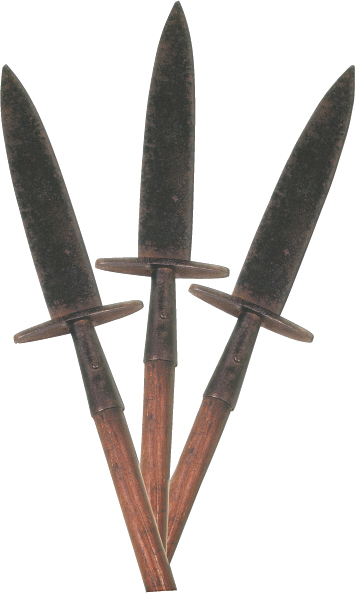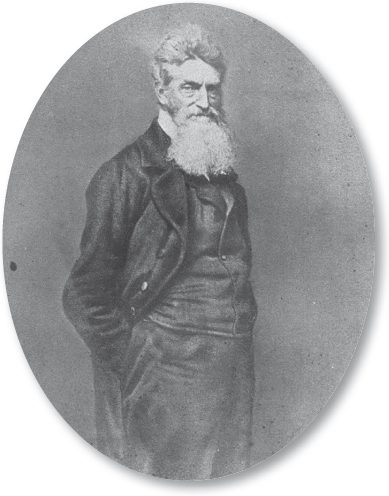The House Divided, 1846–1861

Printed Page 358 Chapter Chronology
The House Divided, 1846-1861

QUICK START
Quickly learn what is important in this chapter by doing the following:
- READ the Chapter Outline to see how the chapter is organized.
- SKIM the Chronology to see what will be covered.
When you are ready, download the Guided Reading Exercise, then read the chapter and the Essential Questions for each section and complete the Guided Reading Exercise as you go. Then use LearningCurve and the Chapter Review to check what you know.
Grizzled, gnarled, and fifty-nine years old, John Brown had for decades lived like a nomad, hauling his large family of twenty children back and forth across six states as he tried farming, raising sheep, selling wool, and running a tannery. But failure dogged him. Failure, however, had not budged his conviction that slavery was wrong and ought to be destroyed. In the wake of the fighting that erupted over the future of slavery in Kansas in the 1850s, his beliefs turned violent. On May 24, 1856, he led an eight-man antislavery posse in the midnight slaughter of five allegedly proslavery men at Pottawatomie, Kansas. He told Mahala Doyle, whose husband and two oldest sons he killed, that if a man stood between him and what he thought right, he would take that man's life as calmly as he would eat breakfast.
After the killings, Brown slipped out of Kansas and reemerged in the East, where for thirty months he begged money to support his vague plan for military operations against slavery. On the night of October 16, 1859, Brown took his war against slavery into the South. With only twenty-one men, including five African Americans, he invaded Harpers Ferry, Virginia. His band seized the town's armory and rifle works, but the invaders were immediately surrounded. When Brown refused to surrender, federal troops under Colonel Robert E. Lee charged with bayonets. Although a few of Brown's raiders escaped, federal forces killed ten of his men (including two of his sons) and captured seven, among them Brown.

"When I strike, the bees will begin to swarm," Brown predicted a few months before the raid. As slaves rushed to Harpers Ferry, Brown said, he would arm them with the pikes he carried with him and with weapons stolen from the armory. They would then fight a war of liberation. Brown, however, neglected to inform the slaves when he had arrived in Harpers Ferry, and the few who knew of his arrival wanted nothing to do with his enterprise. "It was not a slave insurrection," Abraham Lincoln observed. "It was an attempt by white men to get up a revolt among slaves, in which the slaves refused to participate. In fact, it was so absurd that the slaves, with all their ignorance, saw plainly enough it could not succeed."
White Southerners viewed Brown's raid as proof that Northerners actively sought to incite slaves in bloody rebellion. Sectional tension was as old as the Constitution, but hostility had escalated with the outbreak of war with Mexico in May 1846 (see chapter 12). Only three months after the war began, national expansion and the slavery issue intersected when Representative David Wilmot introduced a bill to prohibit slavery in any territory that might be acquired as a result of the war. After that, the problem of slavery in the territories became the principal wedge that divided the nation.
"Mexico is to us the forbidden fruit," South Carolina senator John C. Calhoun declared at the war's outset. "The penalty of eating it [is] to subject our institutions to political death." For a decade and a half, the slavery issue intertwined with the fate of former Mexican land, poisoning the national political debate. Slavery proved powerful enough to transform party politics into sectional politics. Sectional politics encouraged the South's separatist impulses. Southern separatism, a fitful tendency before the Mexican-American War, gained strength with each confrontation. The era began with a crisis of union and ended with the Union in even graver peril. As Abraham Lincoln predicted in 1858, "A house divided against itself cannot stand."